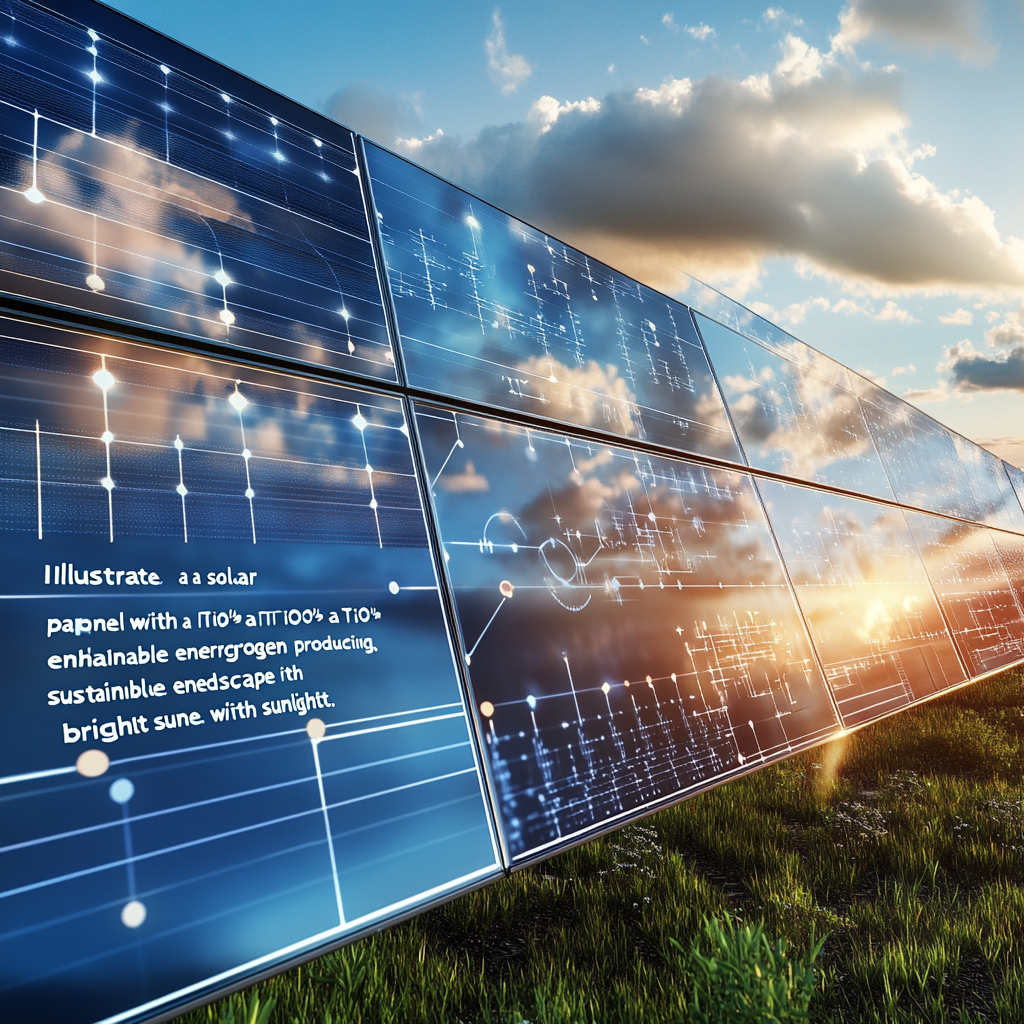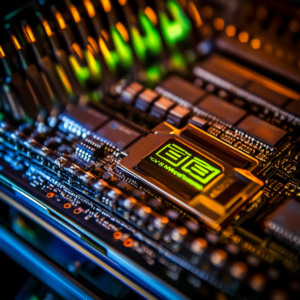
Enhanced Longevity of Photoelectrodes with Protective TiO₂ Layer for Solar Hydrogen Production
A Leap Into the Future: The Marvel of Solar Hydrogen Production with TiO₂
Picture this: a world where clean energy flows as freely as water from a mountain spring. For decades, scientists and dreamers alike have chased this elusive vision, and today, we’re on the brink of a breakthrough that may well bring us closer to that idyllic future. This isn't just wishful thinking—it's about harnessing the sun’s power in a way that could revolutionize how we see sustainable energy. Buckle up, because we're diving into the brilliant development of a titanium dioxide (TiO₂) protective layer that’s turning heads and changing the game in solar hydrogen production.
The Corrosive Devil in the Details
One might ask, why hasn't solar hydrogen production taken off yet? You see, the process—also known as photovoltaic hydrogen production—sounds as enchanting as a fairy tale. It involves harnessing sunlight to split water into hydrogen and oxygen using electrochemical reactions. Sounds easy enough, right? Well, cue the villain: oxidation. Yes, our hero, the photoelectrode, often faces a dramatic and tragic fate at the hands of pesky corrosion. As they valiantly absorb solar energy to drive reactions, they simultaneously succumb to the very water they seek to transform.
Metal oxide-based photoelectrodes, while easier on the wallet, have been popping off like fireworks in the rain—far from the robust and long-lasting technology we need for sustainable energy. Existing protective layers have historically left much to be desired, leading to swift deterioration and the grim end of our heroic photoelectrodes—often within just a few hours.
Enter TiO₂: The Hero We Didn't Know We Needed
The winds of change have arrived, heralded by a team of scientists under the command of Professor Jungki Ryu from the School of Energy and Chemical Engineering at UNIST. Alongside Professor David Tilley from the University of Zurich, they've whipped up a storm that blows the old corrosion problems away. Their creation? A TiO₂ protective layer infused with polyethyleneimine polymer (PEI).
This dynamic duo of materials comes together as a hybrid layer that possesses a particular magic: it selectively allows holes (the positively charged particles, if you will) to facilitate the essential water oxidation reactions while kicking electrons (the negative guys) to the curb. Picture a velvet rope at an exclusive club—only the right players get through. This means enhanced performance of photoanodes and a significant boost in their resistance to corrosion. It’s like giving our photoelectrodes a superhero cape, allowing them to last far longer and work far more efficiently.
How Effective Are We Talking Here?
You might be wondering, "Okay, but does it actually work?" Oh boy, does it ever! When applied to BiVO₄ photoanodes, this newly minted layer kept the water decomposition reaction stable for over 400 hours at a dazzling current density of 2.03 mA/cm². Hold the phone—repeat that! Four hundred hours! For those less versed in the electrifying world of solar hydrogen, let’s put this into perspective: photoelectrodes without protective layers usually throw in the towel after five short hours. We’re talking about a staggering leap in stability and performance. It’s practically a marathon win over a casual jog.
A Versatile Wonder on the Horizon
There's something particularly thrilling about this discovery—not only does it yield a protective layer that molds easily onto various metal oxide-based photoelectrodes, but it also appears to be as versatile as a Swiss Army knife. Want to slap it on iron oxide (Fe₂O₃)? Go for it! This versatility beckons fascinating possibilities, potentially paving the path for solar energy capture in other photoelectrochemical cells—imagine them transforming our bright sunlight into high-value resources galore!
Professor Ryu succinctly sums it all up with, “This study represents a significant breakthrough in developing low-cost, high-stability solar water decomposition technology.” Words like that are enough to make anyone giddy with anticipation of what’s to come.
The Big Picture: Shaping a Sustainable Future
With the rise of the TiO₂ protective layer, we’re not just staring down another innovation; we’re looking at a beacon of promise for the commercialization of solar green hydrogen production. It’s a leap toward embracing sustainable energy solutions, guiding us in our transition away from the choking embrace of fossil fuels and into the luminescent arms of a cleaner, greener future.
So, as you stand on the precipice of this new era, take a moment to appreciate the minds that dared to dream and innovate—who braved the battle against corrosion and emerged victorious. Their work exemplifies humanity's potential to create technology that resonates with our deepest wish: a sustainable planet for future generations.
Stay Ahead of the Curve
Enthralled by this captivating intersection of chemistry, engineering, and sustainability? Are you keen to peek behind the curtain and witness further advancements in solar energy innovations? There’s a treasure trove of knowledge out there just waiting to brighten your day and your understanding.
Want to stay up to date with the latest news on neural networks and automation? Subscribe to our Telegram channel: @channel_neirotoken
Because the journey toward renewable energy is not just a flickering candle—it's a roaring bonfire, and you should be right there, feeling its warmth and brilliance.

